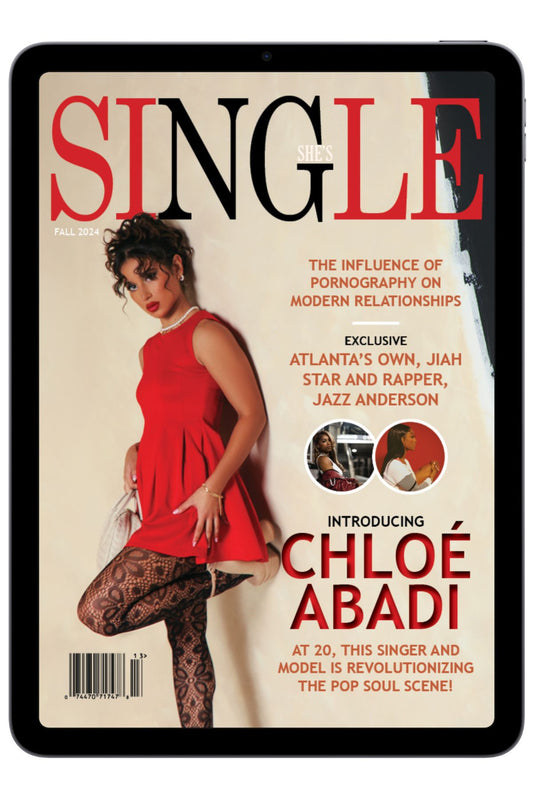The Hidden Cost of Dating Apps: Time, Money, and Emotional Investment

Is there a hidden cost to using dating apps?
The time you spend swiping, getting ready for a date, getting ghosted, and, of course, for men, the date itself, can surely add up and wreak havoc on your mental health. But why have dating apps grown so much in popularity over the last 28 years? Online dating began with websites like Match.com, which launched in 1995. The website allowed users to create profiles and connect with potential partners through personal ads.
These platforms were inspired by traditional matchmaking services and personal ads in newspapers but brought the process online for a broader audience. In the early ’90s, it wasn’t uncommon for singles to take out newspaper ads looking for love—some even went as far as paying for color ads instead of having their images grayscaled. Today, She’s SINGLE Magazine has also run a number of ads for singles, mainly men who have spent upwards of $5,000 for a single space.

However, this has since dialed down as there has been so much discourse online between heterosexual men and women regarding love and relationships, not to mention hookup culture becoming more common. The idea of using an app to find love was once frowned upon, with many users keeping their involvement hidden for fear of being embarrassed or called desperate. However, it didn’t stop a lot of people from joining these websites and finding themselves in successful relationships and marriages.
The testimonials grew, and so did their user base. Then came the rise of mobile technology. The proliferation of smartphones and mobile apps opened new possibilities for online dating, with apps offering more convenience than desktop websites, enabling users to connect anytime and anywhere. One of the earliest mobile dating services was Grindr, launched in 2009. It caters to the LGBTQ+ community and introduced location-based matching, which became a hallmark feature of modern dating apps.
In 2012, Tinder revolutionized the dating app space with its “swipe right” feature, making the process more interactive and game-like. Their success inspired a wave of competitors and niche apps catering to specific demographics, interests, and dating pools (e.g., Bumble, Hinge, freshSingle, OkCupid). Younger generations embraced this shift to online dating and used it as a way to form romantic connections. This was not a problem until more recently.
Once COVID hit, many dating app users were no longer interested in meeting people to go on dates; they were solely interested in at-home meetups, to which many women obliged, considering there was nowhere to go…really. Many heterosexual men saw this as an opportunity to take advantage of the situation, and thus, dating apps started to become less about making connections and more about hooking up. During the pandemic, our social skills took a hit. People began working from home, traveling less, and spending more time indoors than out in nature or filling third places. The world began to feel like something had shifted, and not for the better.
To combat this, dating apps such as eHarmony, continued to push their website to the general public by offering comprehensive questionnaires to help build their algorithm, encouraging users that their matchmaking services were for serious users only—because, let’s face it, someone looking for a one-night stand is not going to spend twenty minutes answering in-depth questions about themselves and the partner they wish to meet. Apps like Hinge also took note and began marketing themselves as tools for serious relationships rather than casual hookups. But one thing is for certain: dating apps are a lazy way to meet people, and when it comes to men, they value nothing they have not earned.
Social media apps such as Instagram, Snapchat, and even Facebook are known competitors for dating apps because, while someone can add a few of their best photos to a dating app, their whole personality can be learned from their social media profiles. We can see their family, evaluate their genes, and learn about their political views, interests, and hobbies (by way of what they actually do versus what they say).
Instagram, in particular, is a top contender for hookup culture and meeting people online. Despite many efforts to keep the platforms separate (social media and dating apps), they seem to have blended seamlessly throughout the years, with many people using them interchangeably. However, those who meet on social media apps are more likely to have a better dating experience than those who meet on a dating app post-COVID.
But one thing is for certain: dating apps are a lazy way to meet people, and when it comes to men, they value nothing they have not earned.
Today, it seems like swiping right or swiping left is more of a pastime than anything significant and worthy of your attention. It will drain you, leave you feeling annoyed and frustrated, and make you believe that the only men in the dating pool are either married, non-committal, or undiagnosed narcissists. Bumble’s approach to having women write to men first on the app was supposed to be a groundbreaking achievement and innovative, but again, men do not value what they do not have to work hard for—and why should they?
If you approach a man in 2024, he is not obligated to lead, set plans, or invest in your potential; he wants to know he has a strong chance of getting a return on his investment. This hidden cost of using dating apps just isn’t worth paying for either party—man or woman. Not to mention the emotional investment that comes along with dating and trying to find the best partner for you.
So, where do we go from here? Men don’t attend mingles centered around finding a partner, they no longer find it beneficial to approach women in public, and they’re more interested in finding a mother they can fuck versus a woman they can marry (most, not all). The answer is simple: delete the apps, make a list of standards, and the things you want out of a relationship. Once you have that answer, search local neighborhoods and venture there on a solo date, bringing along a good book to read.
I recommend something like The Snows of Khione, but that’s because I’m biased, and I absolutely love the book! The point is, you want to be reading something subtle but interesting. Don’t go with a novel written by Maya Angelou, The 48 Laws of Power by Robert Greene, and definitely not a relationship book like Why Men Love Bitches by Sherry Argov. Subtle equals sexy, and when you do this enough times, surely someone will approach you, and the likelihood of you two hitting it off and you being courted properly is far higher than meeting someone on a dating app. Dating apps may be dead in the water, but your quest for love doesn’t have to be.
by Danielle Wright








